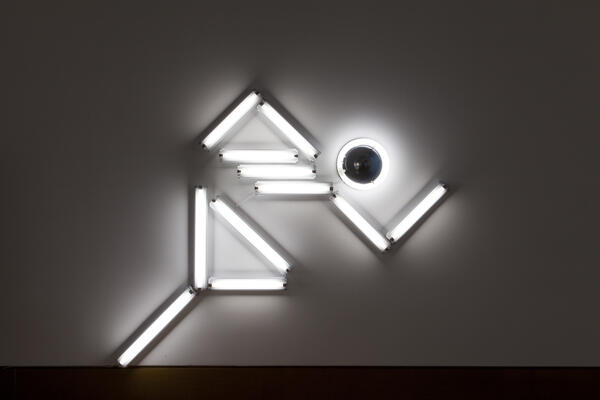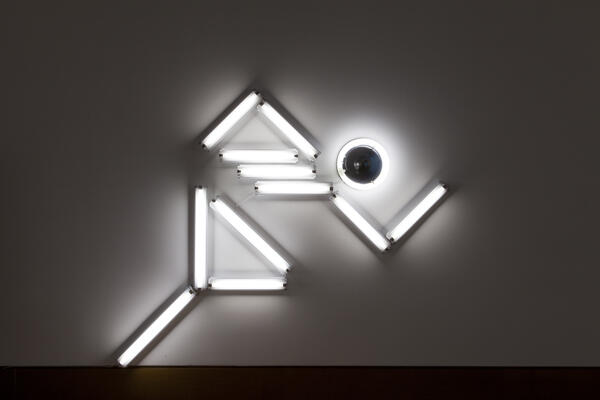Iván Navarro
Frost Art Museum, Miami
On entering the Chilean artist Iván Navarro’s (1972) exhibition Fluorescent Sculptures, the first reference was inevitably the work of Dan Flavin (1933- 1996), since the latter was the artist who pioneered the use of neon tubes as the main material in his work.

But besides the obvious formal differences with Flavin’s work, Navarro is concerned with conveying socially oriented messages. As a member of a generation that was born and raised at such a specific place and time as Chile of the 1970s, it is inevitable that his art should be fraught with political and social references, albeit in a subtle and refined way.
The exhibition was comprised of twenty works, of which fourteen were wall pieces, three were sculptures, and three were videos. The wall pieces belonged to the series Nowhere Man, a title Navarro borrowed from a famous song by The Beatles. From an iconographic point of view, the source of inspiration for the “little men” in this work was the famous pictograms which Otl Aicher created for the Olympic Games held in Munich in 1972. Navarro appropriated the simple but effective forms in the original design and created these dynamic figures that represent different athletes in action. The artist utilizes these schematic renderings in a generic white to refer to the everyday man, disoriented and lacking a purpose in life.
Perhaps the most outstanding work in the exhibit was Red and Blue Electric Chair, strategically placed in the middle of the exhibition space. Based on the iconic chair designed in 1918 by Gerrit Rietfeld, Navarro’s chair transcends the borders of pure design to become an object with a strong conceptual content. The sculpture represents the dichotomy between the fragility implicit in the material employed (fluorescent tubes), and the dangerousness of the electricity that produces light and may potentially kill. The apparent absurdity of making a chair, which is primordially a functional object conceived to sit on it, from a material as fragile as the glass the tubes are made of, generates a contradiction. This idea was explored further in depth by the artist in a similar piece executed previously, ‘ You Sit, You Die’, in which he also included the names of individuals executed via this method. According to the artist, this was his version of an electric chair.
Navarro’s career has been extremely successful up to the present. Besides featuring numerous exhibitions in institutions around the world, in 2009 he represented Chile in the 53rd Venice Biennale.
Navarro is an artist who has chosen his path very consciously. At a moment when the fascination with all the advantages and possibilities offered by state-of-the-art technology prevails in the world, he has preferred to continue using what may be considered an almost archaic element: fluorescent tubes. Thus, he has opted for the purity and simplicity of neon to create an oeuvre that turns away from minimalist asepsis and raises further questions on the nature of the human being of our time.
-
 Nowhere Man I, 2009 - Cool white fluorescent lights and electric energy - 65 x 77 inches
Nowhere Man I, 2009 - Cool white fluorescent lights and electric energy - 65 x 77 inches
Courtesy of the Artist






